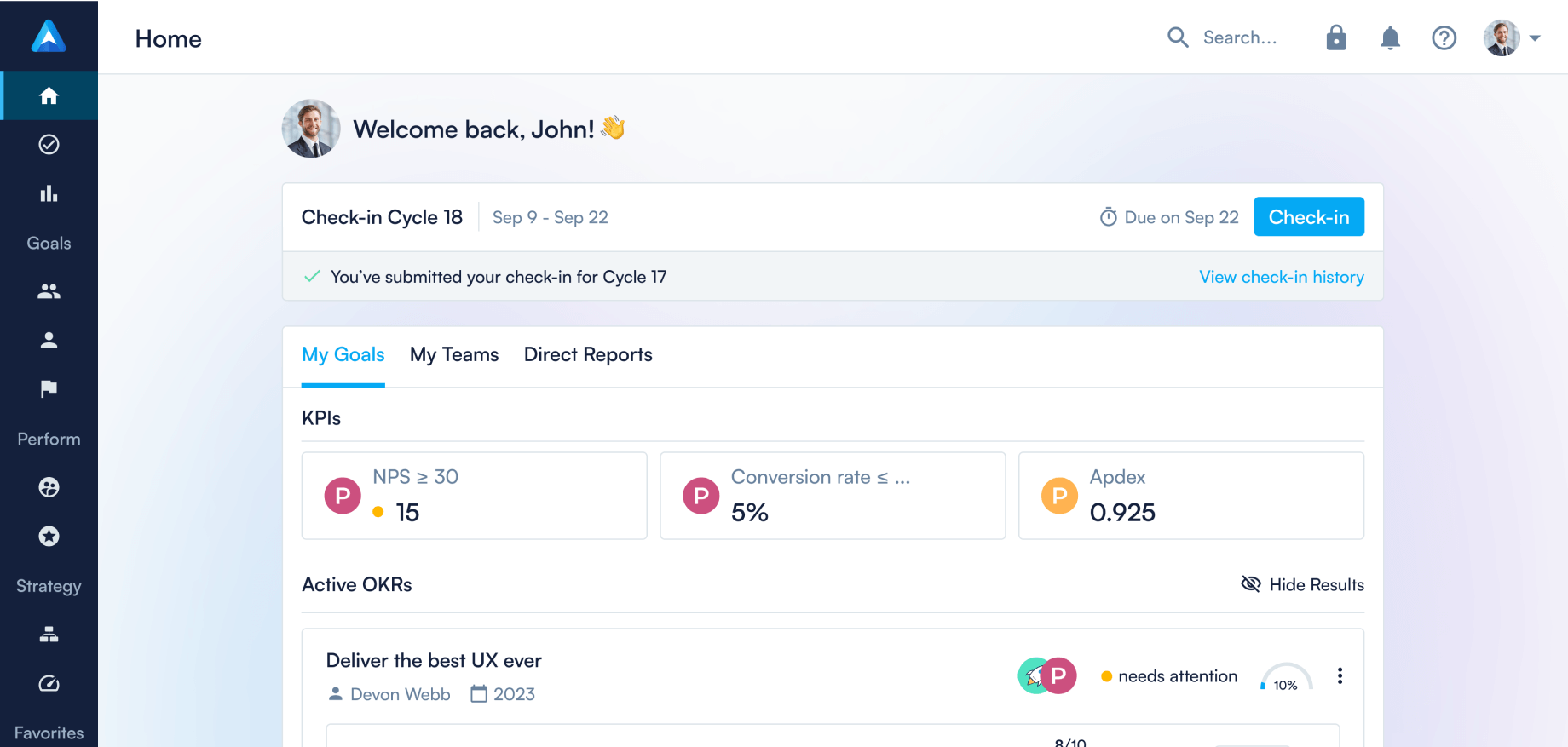
How leaders can connect with all their people

We spoke to Pieter van Oijen about leadership. What makes a good leader? What challenges do today’s leaders face? And how can these be overcome? Pieter shares his views with us in our latest interview!
Perdoo:
Please tell us a bit about yourself and your journey with OKR.
Pieter:
I have a background in Finance. Over the years, my interest and passion have shifted from financial planning & business control to themes around transformation, organizational success, and customer value delivery.
Before joining Objeqts as an advisor, I worked for 4 years on the global adoption of continuous improvement and customer-centricity in the local admin and support functions of a multinational company. We based our programmes on the lean philosophy and lean tools. To me, OKR is the perfect add-on that brings business impact, value-based working, accountability and transparency to the next level without introducing additional high-brow concepts.
Perdoo:
How would you describe a good leader, and has this changed over time?
Pieter:
At a high level, the responsibility of a leader hasn’t changed. It’s to create an organization that is successful in delivering customer and stakeholder value, and is financially sound while doing so.
However, the role that leaders play in this, and how they contribute, is changing at the moment. Most organizations are trying to become agile these days. Agile organizations are less hierarchical, rely on collective brainpower, work in shorter cycles, and experiment a lot (ie, they embrace failure). What employees are asking from their leaders is not to be the expert that provides all the answers and tells them what to do—but to provide coaching, context and direction. The modern leader inspires, creates trust and psychological safety, and continuously shows his or her commitment to the mission, vision and strategy.
Perdoo:
What is the biggest challenge that leaders face nowadays?
Pieter:
Execution.
Creating a clear ultimate goal (ie, mission & vision) for the organization, and designing a 3- to 5-year strategy to get there, is something that most leadership teams will get done without too much trouble (though some need external help to make it crisp and clear). It’s delivering that strategy that is the real challenge. As John Doerr says: “Ideas are easy, execution is everything”.
Perdoo:
How can leaders overcome this challenge? And what happens if they fail to overcome this?
Pieter:
Strategy delivery is what most companies are—and always have been—struggling with. It requires a structured framework that leads employees in the right direction. OKR is a key element of such a framework. OKR is easy for everyone to understand, can be tailored to each organization’s specificities, creates a common language for business goals and goal realization, and makes progress visible.
On top of that, it enables leaders to have meaningful interactions with employees throughout the organization. The simplicity and clarity of OKRs facilitate those interactions. With a solution like Perdoo, leaders can easily see what Objectives were worked on in the past, the results that were achieved, ideally also the initiatives that delivered those results. All this with a simple, common language and a shared understanding of the organization’s mission, vision and strategy. A great basis for meaningful connections that really make a difference!
Perdoo:
Can you elaborate a bit on those meaningful interactions?
Pieter:
Nowadays, the work we do mostly takes place in computers. As a result, we have a poorer understanding of what our colleagues one floor down or up are working on. Those computers are also taking over simple, repetitive tasks, leaving the more intellectual and creative work to employees. That makes it increasingly difficult for leaders to have meaningful conversations with employees or team leaders that are a few levels lower in the organizational hierarchy. In the adverse case, this leads to ‘office tourism’, as some call it, where seniors go to the workfloor, visit teams and staff but conversation remains superficial and there is limited interaction. As a result, leadership is reluctant to actively engage and employees feel that there’s a lack of commitment from the top.
Perdoo:
Thanks for sharing your views with us!
FAQ








